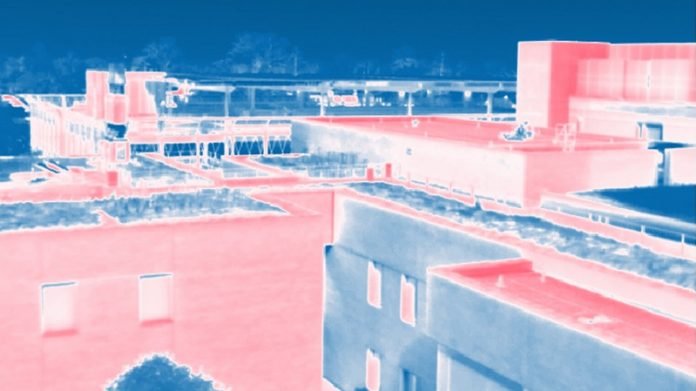
Researchers at Princeton University and UCLA have discovered a new way to cool buildings in the summer and warm them in the winter using common plastics.
This passive mechanism could make buildings more energy-efficient and comfortable without relying on expensive and energy-intensive systems.
In a recent article published in Cell Reports Physical Science, the researchers explain how they used special coatings made from everyday materials to control how buildings exchange heat with their environment.
By restricting heat flow to specific wavelengths, these coatings can achieve energy savings and better thermal comfort than traditional building methods.
“With rising global temperatures, keeping buildings habitable has become a significant challenge,” said Jyotirmoy Mandal, an assistant professor of Civil and Environmental Engineering at Princeton.
“Buildings exchange most of their heat with the environment as radiation. By tailoring the optical properties of their surfaces, we can control this heat exchange in new and impactful ways.”
Radiant heat, which travels as electromagnetic waves, is something we experience daily, like when sunlight warms our skin or an electric heater warms a room. Most buildings already try to manage this heat by using window shades to block sunlight or painting roofs and walls white to reflect the sun.
“If we look at historical cities like Santorini in Greece or Jodhpur in India, we find that cooling buildings by reflecting sunlight has been practiced for centuries,” said Aaswath Raman, an associate professor of Materials Science and Engineering at UCLA. “Recently, there’s been a lot of interest in cool roof coatings that reflect sunlight. But cooling walls and windows is a more complex challenge.”
Roofs usually have a clear view of the sky, allowing cool roof coatings to reflect sunlight and radiate heat upwards into space. However, walls and windows mostly face the ground and nearby buildings. During hot weather, they absorb heat from the hot streets, pavements, and surrounding buildings, making it hard to keep them cool. In cold weather, they lose heat to the colder environment around them.
The researchers found a solution by understanding how heat moves differently between buildings and the sky compared to between buildings and the ground. Heat moves to the sky through a narrow part of the infrared spectrum called the atmospheric transmission window, which they refer to as narrowband. On the ground, heat moves across the entire infrared spectrum, which they call broadband.
“By coating walls and windows with materials that only radiate or absorb heat in the atmospheric window, we can reduce heat gain from the ground in the summer and heat loss in the winter while still benefiting from the cooling effect of the sky,” Mandal explained.
The study’s findings are significant for two main reasons. First, the researchers showed that many common and inexpensive materials, like polyvinyl fluoride and polypropylene (used in household plastics), can selectively radiate or absorb heat in the atmospheric window.
“We were excited to find that materials like polypropylene, sourced from household plastics, work well for this purpose,” Raman said. “These materials are common and scalable, making them ideal for widespread use in building thermoregulation.”
Second, the potential energy savings are substantial. The researchers noted that their method could provide seasonal energy savings similar to painting dark roofs white. This could be especially useful as air conditioning costs and heat-related deaths continue to rise worldwide.
“The passive mechanism we proposed offers a sustainable way to cool and heat buildings with the seasons, yielding significant energy savings,” Mandal said. “The benefits are particularly high for buildings in the global south, providing a more equitable solution for resource-poor communities facing increasing cooling demands and heat-related mortalities.”
The research team includes Jyothis Anand from Oak Ridge National Lab, John Brewer from UCLA, Sagar Mandal, an independent researcher, and Arvind Ramachandran from Arizona State University. They plan to continue their research to explore the full potential of these materials and methods for building thermoregulation.


